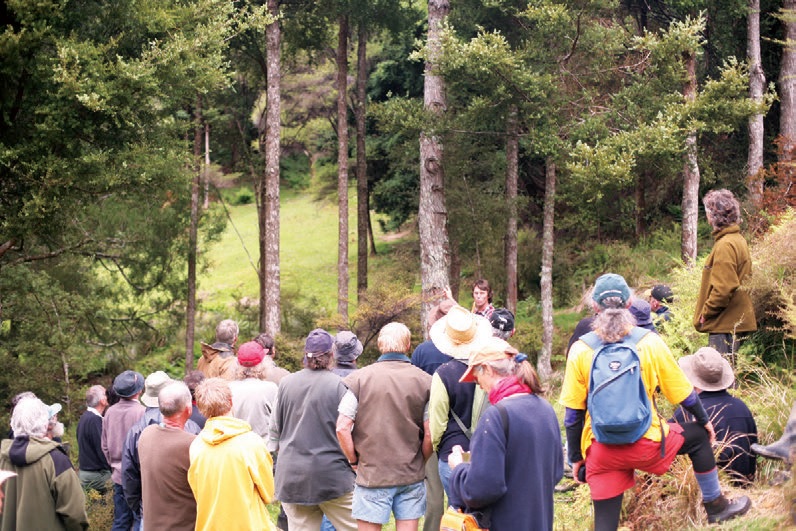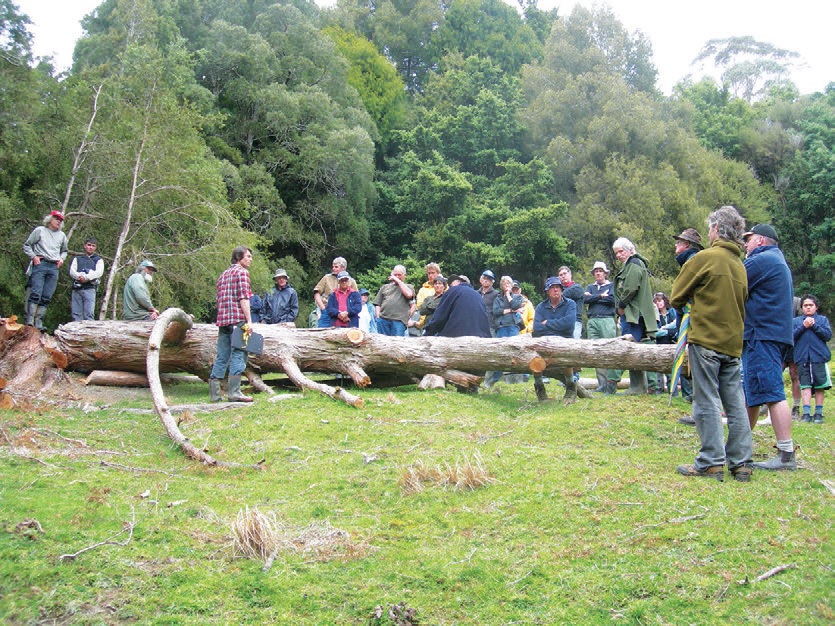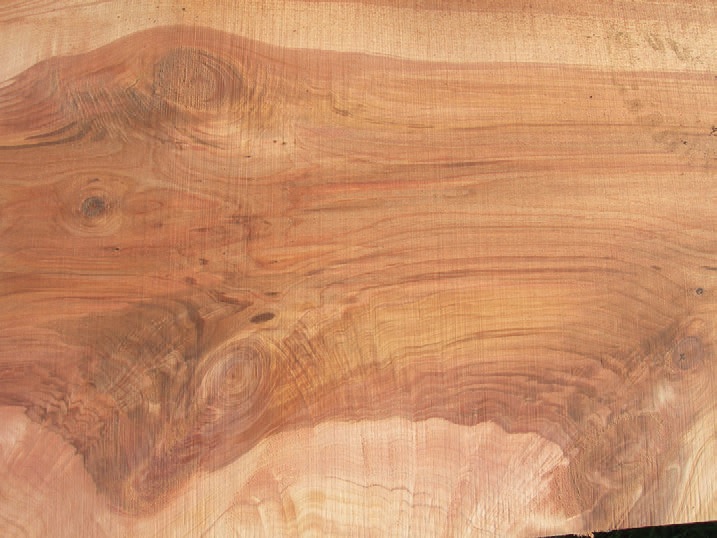Far North field day Re-conceptualising weedy scrub
Dean Satchell and Doug Lane, New Zealand Tree Grower August 2009.
This ex-dairy and drystock property was purchased by Paul and Katarina Quinlan in 1996 and had already been occupied as a lifestyle block for 16 years. Being mostly rolling contour, a significant area of regeneration into predominantly totara scrub had already taken place. The property is 15 hectares in total, of which six hectares are owned by Paul and Katarina. Paul’s brother-in-law owns the balance.
The land supports some livestock on the clearer flatter areas and the Quinlans are keen to maintain this capacity without affecting natural regeneration. Paul says that the challenge is to find an appropriately sustainable land use for the steep gully area. He has tried to work with the natural processes of regeneration and re-conceptualise this weedy scrub as a new emerging native forest and turn what is often a liability into a developing forest asset.
Multiple objectives
Paul is heavily involved with the Northland Totara Working Group. Their objectives are to quantify the natural totara resource and examine the effects of silviculture with a view to developing sustainable totara timber production.
The Quinlan property has multiple farm-forestry objectives including −
- Moving land use emphasis from pastoral farming on steeper areas to continuous cover indigenous forestry using natural regeneration
- Erosion control
- Improving indigenous biodiversity, wildlife and aesthetic values
- Maintaining livestock grazing capacity

Paul pointed out that some of these objectives are in apparent conflict so compromises are made. However achieving an appropriate and sustainable land management outcome for this hobby farm property is the goal. The property has the first MAF approved Sustainable Forest Management Plan in Northland and the only one in New Zealand for an immature forest, with the honour of being the smallest official forest.
The plan has been registered on the property for 50 years to secure the right to harvest. It officially recognises and validates this scrub resource as a legitimate forest type capable of sustainable management. Paul admits to undertaking this plan application as a test case. What we witnessed on this property is a minute part of a very large Northland resource and the trial results shown are a reflection of the trials being undertaken elsewhere.
In the Far North district alone, 105,000 hectares are in scrub cover, more than that in plantation forest, with totara and kahikatea often the dominant species of regeneration. An inventory project carried out by the totara working group in the Whangaroa Community Area estimated 480,000 cubic metres of standing tree volume already exists.

Looking at these figures it is easy to see why Paul is passionate about being a part of this developing resource. On a regional basis the resource comprises mainly trees less than 30 cm in diameter, although there are merchantable sized second growth trees.The problem of no consistent supply has to be addressed for this resource to be commercially attractive.
Great attributes

We already know totara has great attributes. From limited trial work it responds well to silvicultural intervention and further back down the track it establishes itself very readily. It is stock proof, except under intense grazing where severe bark stripping occurs.
Both individual tree and average plot growth rates for managed stands on the Quinlan property are impressive. Individual trees achieve annual growth rates of 1.6 cm of diameter at breast height for the nine year recording period. There is obvious benefit from pruning and thinning, even if only by removing obvious defective trees and doing some form pruning. The challenge now is to explore how silviculture can push the limits and discover a minimum or optimum merchantable tree size in parallel with developing a market for this easy to grow, high value indigenous species.
Field day
After lunch Li Legler gave a saw-milling demonstration using his Woodmizer portable sawmill. He showed efficient conversion of small logs on site into valuable timber. The horizontal bandsaw on wheels proved its versatility by first milling a small diameter eucalypt log using a specialised hardwood milling pattern.
Paul had also arranged for two totara logs to be milled − a small diameter branchy log and a 60 cm diameter six metre long butt log estimated to be about 50 years old.
Both totara logs were slabbed and milled well. Of interest were the pruning wounds inside the smaller log and the effect that pruning and abundant knots have on the timber, leading to discussion about silviculture options.
There was surprise among the onlookers and an obvious look of excitement on Paul’s face as the larger log revealed a wonderfully colourful and attractive timber. Following some further discussion, this was milled into a range of sizes suitable for furniture for Paul’s home. Lots of food for thought and a fantastic field trip.

 Farm Forestry New Zealand
Farm Forestry New Zealand